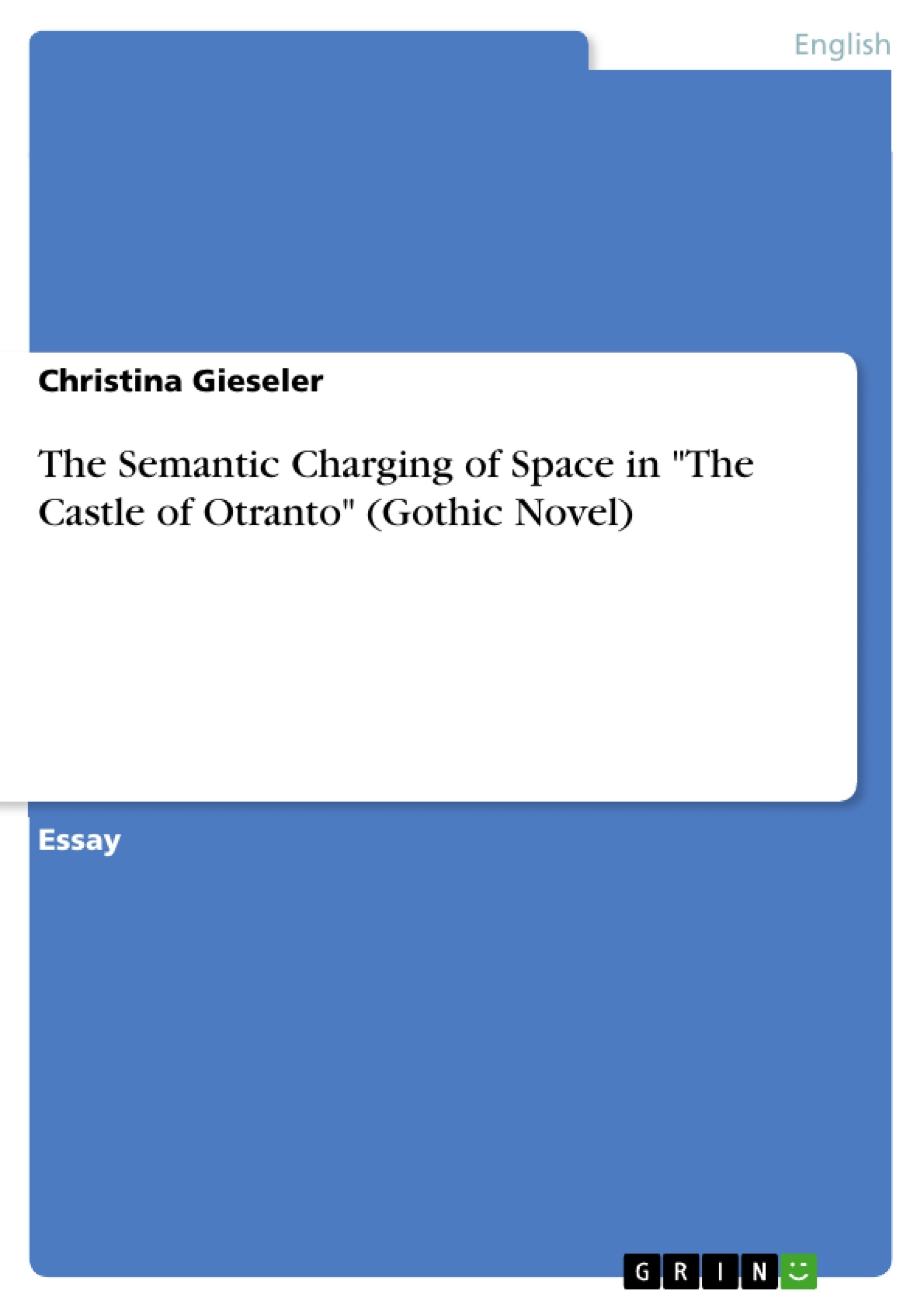[…] An awful silence reigned throughout those subterraneous regions, except now and then some blasts of wind that shook the doors [Isabella] had passed, and which grating on the rusty hinges were re-echoed through that long labyrinth of
darkness. Every murmur struck her with new terror […] (Walpole 61).
This passage of Walpole’s The Castle of Otranto is only one example that shows how the construction of the setting in this novel strongly contributes to the atmosphere of the tale. Also in other passages it becomes obvious that the description of space and landscape conveys a specific meaning within the story, and even prefigures the development throughout the plot. Nünning and Nünning mention: „Räume [fungieren] nicht nur als Schauplätze […], sondern [erfüllen] eine ‚Erzählfunktion’ […], ‚räumliche
Oppositionen [werden] zum Modell für semantische Oppositionen’“ (cf. 132). Thus, several places and the landscape depicted in the setting may function as semantic carriers (cf. ibid. 133). In this essay it will be examined in how far space is semantically
charged in Walpole’s work, and how this influences the plot, the atmosphere within the story, and the reader’s perception of it. In addition, it will be shown that the semantic charging of the settings in The Castle of Otranto is also influenced by its being a Gothic novel. Therefore, a definition of the latter term will be given as well...
Table of Contents
- The Semantic Charging of Space in The Castle of Otranto
- Gothic Features and the Semantic Charging of Space
- Boundedness of the Setting and the Semantic Charging of Space
- Interwoven Places and the Semantic Charging of Space
Objectives and Key Themes
This essay examines the semantic charging of space in Horace Walpole's The Castle of Otranto and its influence on the plot, atmosphere, and reader's perception. The essay also explores how the semantic charging of settings is shaped by the novel's Gothic characteristics.
- The role of space as a semantic carrier in The Castle of Otranto
- The connection between the novel's Gothic features and the semantic charging of space
- The impact of the setting's boundedness on the characters' and reader's emotional responses
- The interplay of different locations and their contribution to the semantic charging of space
- The influence of the novel's atmosphere on the reader's perception
Chapter Summaries
The first part of the essay introduces the concept of semantic charging of space in The Castle of Otranto and provides examples from the novel. The essay then delves into the specific characteristics of Gothic novels and how they contribute to the semantic charging of space in Walpole's work. Particular attention is paid to the significance of the castle, its haunted atmosphere, and the ancient prophecy that haunts the family. The essay then explores the boundedness of the setting, analyzing how the characters' emotional states are shaped by the confinement of the castle, its surrounding areas, and their symbolic meaning. Finally, the essay examines how the interconnectedness of different places within the novel adds to the semantic charging of space, demonstrating how the locations and their descriptions enhance the overall narrative.
Keywords
Semantic charging of space, Gothic novel, The Castle of Otranto, Horace Walpole, setting, atmosphere, boundedness, prophecy, supernatural, haunted, emotional response, reader's perception, castle, convent, caverns, labyrinth, confinement, escape, fear, terror, sublime, darkness.
- Quote paper
- Christina Gieseler (Author), 2007, The Semantic Charging of Space in "The Castle of Otranto" (Gothic Novel), Munich, GRIN Verlag, https://www.grin.com/document/148728



